Text

In today’s society, technology has become such an important part of our everyday life. Whether it between family, friends, or a significant other, technology has made a huge impact in the way we communicate. As a society, we have learned to integrate technology into every day life as if it has always been around. Today’s generation of kids have grown up with technology like it was a third arm or hand in the way that we connect and communicate with people. In the movie “Her”, the idea of intimacy is reflected through the use of technology and that technology can create intimacy, a relationship, and love. Pettman talks about how love and technology are similar in a sense that technology allows us to create intimate connections with others. I want to first talk about the time when technology wasn’t as advanced and cord phones and dial up internet was the newest form of technology. Intimate relationships were pretty much developed either through email, phone calls, or face to face interaction. We didn’t have video chat, dating websites, Snapchat, or other technological advances to help us communicate like we do now. Technology now allows us to make connections, communicate, and have intimate relationships with people unlike how we used to, the “old fashioned way”. Intimate relationships have truly become a whole new playing field. I think this is what Pettman means when he says that technology and love have become this duo. There is no script that we follow to experience love, love is objective, it’s just that new tools have changed intimacy as we know it, as seen in games, books, and movies in the media today.
Technology has simply sped up the process of getting to know someone online. It allows people who wouldn’t have the chance to meet face to face, get to know each other through technology. I think that technology opens another realm of intimacy. It creates different types of fantasies that would only naturally happen through the use of technology. In the movie “Her”, although Samantha is an OS for the purpose of the plot, Theo experienced a lot of things he wouldn’t normally experience with someone face to face. Although face to face interaction and physical connection is an important factor in creating a solid relationship, technology is being used to make relationships stronger and open up other possible doors of love and intimate encounters. However, I think that there is a difference between love and attraction. I think the relationship that Theo and Samantha have is an attraction. They’re attracted to each other, but there weren’t a lot of ways that they could show that they “love” each other, even though they say they do.
Moving on to Manghani’s ideology of intimacy, I really like how Manghani compares text messaging to poetry. Text messaging is the present day poetry in how we express our emotions and love to a person. Poetry evokes feelings and it is something that a person is emotionally invested in. In today’s society, we are emotionally invested in our phones and technology. Texting is a discourse of love. Although when we think of texting, we think it to be causal, with emoji’s, slang, and short abbreviated messages that are quick and convenient; texting is more intimate than we think. Texting allows us to communicate and exchange our thoughts and feelings in a more private manner. Text messages allows us to create an artifact of love and communication. Again, another new form and perspective of how we experience intimacy. In the movie, Theo writes letters for people which eventually becomes published. I think this reflects Theo’s emotions because he has to write letters that are suppose to make someone feel a certain way. In a way he is connected to each one of his clients which is another example how text messaging can create relationships and intimacy.
0 notes
Text







In SciBabe’s article, she explains that starting her blog enabled herself and others to show the web and the general public that people who look like them do science and are regular people. Similarly, FungBros, Veronica Wang, and EmmyMadeInJapan essentially influences their viewers that they can explore, learn about, and have a passion for food too, and that these accounts are developed and created by regular people, “amateurs” or “fans” just like the rest of us. In relation to digital labor, by creating videos and posts using social media platforms, you would typically gain crowd source such as likes, followers, and views; even YouTube acknowledgement every time you gain a certain amount of subscribers. This basically compensates for the labor and the fact that users don’t make money from uploading content, the companies who own social media platforms actually do. This leads into Duffy’s theory of aspirational labor, which is creating content that establishes a connection between users and their viewers; hoping, but not promised, that ”doing what you love”, creating relationships, and having that digital labor commitment will eventually brand a name for users, gaining connections and recognition, and becoming part of the big name entrepreneurs. Digital labor incorporates three types of work, informational, emotional, and cultural work, which according to a Duffy is called immaterial labor. These types of work are connected to the concept of aspirational labor because it creates authenticity, realness, and establishes a relation between users and their viewers which could virtually hold the key to social and economical capital.
Not to say that users don’t create content because they actually do enjoy or love what they do, but having crowd source could develop the outcome of becoming a “professional” or famous that could potentially land you a job where you do get paid the big bucks. However I do agree with Duffy in regards that doing what you love through social media and digital labor isn’t always ideal and that there are problems. Specifically how it intersects with class. Being a YouTuber requires time, education, and money to develop content that is considered “professional” and worth being recognized for. For example, Veronica Wang is young women living by herself that makes videos at home and has minimal help with her editing, location, and material for her videos. EmmyMadeInJapan is a stay at home mother who also has little to no help creating content for her videos and her space is limited. However, both of these accounts use what Duffy calls immaterial labor to gain crowd source and develop somewhat of name for themselves and a connection. Whether or not they’re considered to be at the top, they still are a part of aspirational labor in a sense that creating content gives views and attention. On the other hand, FungBros is a great example of how the creation of content and aspirational labor enabled them to brand a name for themselves successfully. Fungbros started out creating videos in the 626, also know as the San Gabriel Valley. I was intrigued by them because I’m from the 626 and have grown up around the locations that FungBros actually filmed at for the content of their video which influenced me to continue to watch them. I think the collaboration of the culture and Asian cuisine in the 626 with the FungBros style, taste, and perspective, they were able to create that authenticity and realness creating connections and relationships with their viewers and subscribers, especially people from the 626. Now, FungBros live in NYC where they’ve created new content that reviews food and restaurants in New York City! It’s cool to see how they’ve grown and what they’re capable of now and the credibility and name they have for themselves. In essence, being a digital laborer and a aspirational laborer go hand in hand, I think that aspirational labor is almost inevitable in the digital labor world because of the fact that making good money through digital labor isn’t guaranteed.
0 notes
Text
#MeToo

Morozov’s “Making History” article talks about the idea that technology enables people to participate in national discourse, publish news, and distribute information. Technology has progressed in many ways starting with the telegraph, then radio, then television. It has the ability to raise the level of public debate, introduce transparency into politics, and reduce nationalism. It helps to develop social determination as it is a extension of knowledge, civilization, and truth. However, it doesn’t actively change society, politics, culture, and economics to a full extent. “Technology shapes structure of the battle but not every outcome.” Technology and the internet is a medium that society and groups of people use as a tool for democracy, liberation, and free speech. However, technology is also portrayed as a lazy way to learn about politics, culture, economics in the past, present, and future. Technology determinism in relation to social determinism creates a lot of “couch potatoes” because it makes advocating and wanting to create change much easier; it takes away from the responsibility of building a social movement when you have the help of technology. In the Jackson and Foucault article, they discusses how public spheres take on the role of a citizen by sharing information, media, and setting up democratic debates in contemporary societies about social political issues. Counter public’s are marginalized groups that create and maintain their own alternative public’s with the expressed goals of both enacting and communicating their lived realities by pushing the mainstream public sphere to acknowledge and respond to these realities. Activism online has become extremely popular because of the resources that technology and the internet has to offer. The #Ferguson is a great example of how activism online is affective and helps to promote change and awareness of various political, cultural, and economic issues. Hash tagging helps to push movements further into the mainstream public sphere and attract the public in a positive and active way. For example, #Ferguson essentially made a name for itself and became iconic which pushed the movement of Black Lives Matter.
The social movement that I chose to reflect on is the Me Too Movement. The Me Too was created to help survivors of sexual violence, specifically women and other young women of color from low income communities, find ways to heal. This movement has also created a hashtag #MeToo which coordinates action and advocates the conversation about sexual violence which opens a door for dialogue that could have been suppressed and hidden from societies and communities. This movement helps to give survivors a voice that will eliminate the stigma of being a survivor and speaking out on sexual violence. The hashtag also publicizes the message that the movement expresses; that survivors are not alone and that we should all be working to make change and statement. There goal and work is to spread global awareness and conversation about sexual violence to empower all women through empathy and community based action. The work is led by survivors to spread resources and needs to communities. For example, founder Tarana Burke made a culturally-informed curriculum to discuss sexual violence within the Black community. The Me Too movement also supports other communities like younger people, queer, trans, and disabled individuals. Supporting other communities strengthens the movement. I support this movement because not only does it empower survivors, it empowers all women.
0 notes
Text




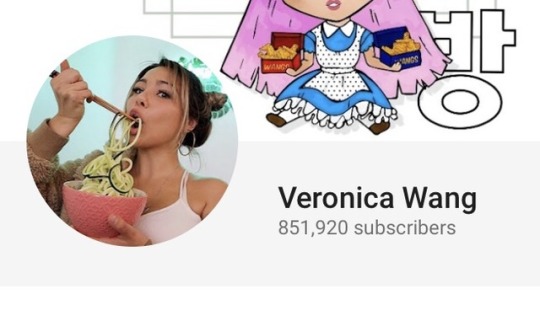
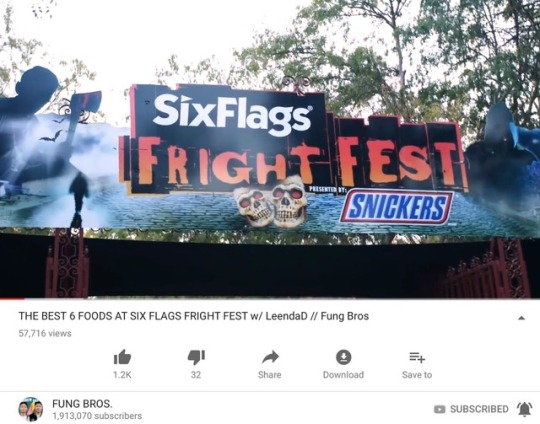




When the food community first started out and became a part of social media and television, it was mostly represented by professionals. Individuals that were credible and made money for having knowledge or expertise in the food industry. For example, there were cooking shows on the Food Network hosted by Rachel Ray or Giada, food enthusiasts like Bobby Flay and Alton Brown. Then as the food community progressed and and branched out there were even more television programs that were related to food that involved eating, cooking, traveling, even reality tv shows and competitions were produced to expand the passion and knowledge of food. What makes a professional in the food community a “professional” would be the experience a person has engaging in food related instances and opportunities. And if you’re good enough, you get lucky and you get paid to share your knowledge and expertise with viewers, audiences, and subscribers. Shows on the Food Network and programs like Chopped, Man Vs Food, Dine In Drive In’s and Dives, and Hell’s Kitchen are primarily hosted by professionals who have had experience in their life working with food and learning about food. They also have a cast and crew that guides them when they’re filming and creating content; as well as people helping to edit, record, and produce what is going to be aired on public television or social media. Professionals basically have it all in the bag to help them build credibility and a reputation for being a pro in the food community.
What makes an amateur an “amateur” in the food community is someone who uploads content to social media sites like YouTube, Facebook, or MySpace. This relates to the Jenkin’s ideology of participants culture which is a culture in which fans and other consumers are invited to actively participate in creation and circulation of new content. Although we already have various food related shows on television represented by professionals, there are a lot of people who create content that is similar to what you see on television, however, they relatively have low barriers to artistic expression and civic engagement. YouTuber’s enjoy sharing and creating videos because they gain a lot of support from viewers, they are able to pass down their experience to novices and fans. Amateurs also believe that their contributions matter and feel some degree of social connection with one another which is another way Jenkins defines participatory as a culture. If you’re able to engage, share, and put out content then why not participate. FungBros creates lots of videos that reflect the same idea and concept as Diners, Drive In’s, and Dives and Man Vs Food where the host reviews and explores must-try foods in various locations across the US. Although FungBros is not aired on television they are able to put their unique style and editing touch to their videos that give them a name in the food community.
Also, people who upload content on websites like YouTube don’t get paid like professionals on television which creates a wall between professionals and amateurs or fans for this matter. Digital labour in the social media world is the exploitation of unpaid labour in the creation of content for social media in which companies benefit at the expense of labour. While Youtubers and other accounts via social media work long and hard to make content for viewers and the public, the only people really benefiting financially is the companies that own the social media platforms. However, Jenkins argues that exploitation is not really a problem because users benefit in other ways by using such platforms. Jenkins explains that free labour may be meaningful and rewarding because users are not purely motivated by financial returns but by the desire to share with a larger audience. Users take pride in their accomplishments and have a desire for dialogue. For example, First We Feast “Hot One’s” is hosted by Sean Evans where he eats hot wings with various guests while interviewing them. Evans essentially does what he does for the purpose of dialogue, contribution to the food community, and connecting with others and sharing with viewers.
Lastly, fans are not just people who watch professionals or amateurs on social media or television, according to Jenkins, fans can also be people who contribute to the community by sharing culture and stories that create content for audiences to watch. Youtubers like Veronica Wang and EmmyMadeInJapan create and edit all their videos on their own with no cast or crew for their own interest. Jenkins idea of fan culture helps prepare for a more meaningful and public culture. Having fans in addition to professionals and amateurs creates a support system and revolving door that essentially helps the food community expand and grow. If all we did was look up to and watch professionals on television, we wouldn’t have the diversity and various perspectives of food and it’s culture. Overall, the food community is no longer just represented by professionals, amateurs and fans are also a part of the contribution and expansion of the community and culture of food which create a world of ever explaining media options.
0 notes
Text
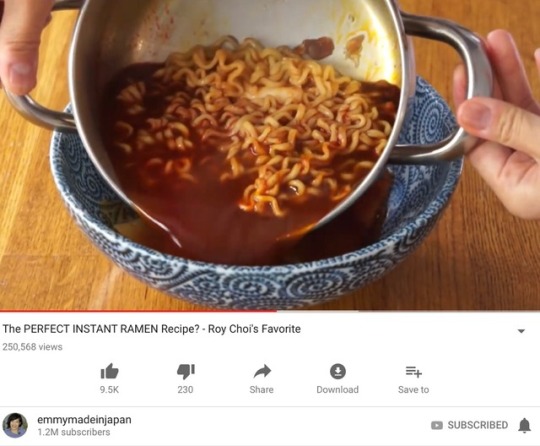





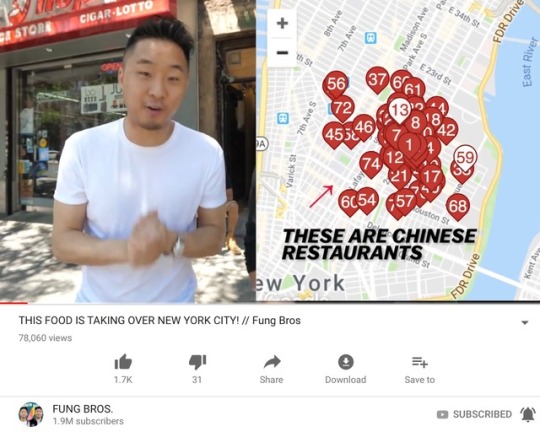


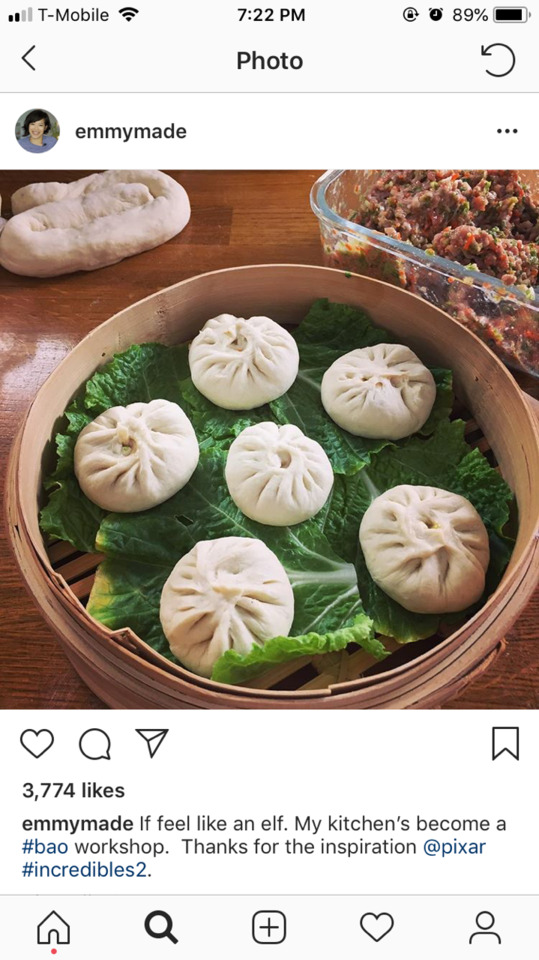
Since social media has grown and developed into a huge network, people can pretty much post anything and everything. Whether it be opinions or facts, real or fake, mainstream or something bizarre, you can be sure to find varying degrees of whatever you may be searching for. Pun intended. Through the the online world, a sense of identity, culture, and taste has emerged as well. We have used the internet to create connections, grow communities, and share with others our various tastes. In the past, the food community was very small; in the early stages of the food industry, the only content was programs on television like the Food Network that generally aired basic cooking shows. Through social media I think that the food community and it’s “culture” has grown into various subcultures, it’s no longer just cooking shows.
In correlation to taste, the accounts that I follow each have different tastes in the way they create video content that is centered around food. The account First We Feast “Hot One’s” uses food as a way to create conversation and a foundation for their videos. Good Mythical Morning also uses food for entertainment and talk show purposes. The account FungBros, they creates videos that use food to explore popular culture and Asian culture. Emmy Made In Japan creates videos where she makes and tastes food as well as samples treats that viewers might also be interested in or find informative. Veronica Wang in particular presents her taste for food as a “Mukbang” which are broadcast videos where hosts eats large amounts of food while talking to their audience. BuzzFeed’s Tasty has even taken a different approach on sharing recipes using aesthetically pleasing camera angles and video editing. Evidently, each account has executed their food related video using different tastes which creates subcultures in the food community.
I’d also like to discuss how Asian culture and cuisine has become more popular and more of a trend in the food community and in general. Asian cuisine is thought to be very exotic, not like your average burger and fries, although somehow it’s made it’s way into mainstream culture because it has become so popular. In the accounts that I follow a lot of them use Asian cuisine for the content of their videos. FungBros specializes in Asian cuisine as it has become a trend in popular culture. In one of the photos posted by FungBros, they created a video that talks about how Chinese food has taken over New York City. Emmy Made In Japan is Asian so she uses her cultural background to influence and create videos. Veronica Wang is half Chinese and expresses her identity and culture through the food that she cooks and eats in her videos. If I’m understanding this concept correctly I think this is related to Florini’s concept of “creative tension.” Creative tension encourages others to participate generating a sense of solidarity, encouraging higher levels of performance. Each account incorporates Asian cuisine and culture into their videos to encourage others to also explore Asian cuisine which in turn generates a sense of solidarity. Creating that support will pushes Asian culture and cuisine into the mainstream culture.
0 notes
Text


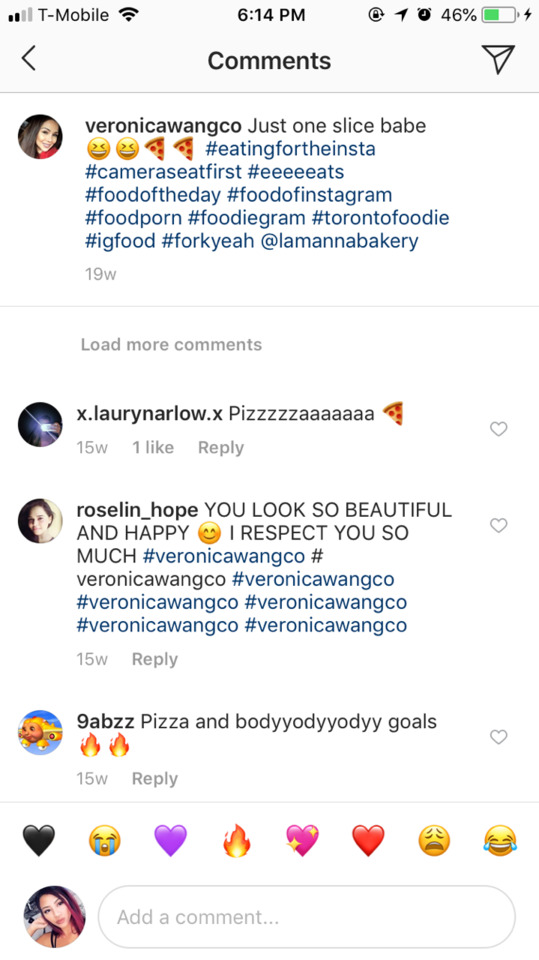

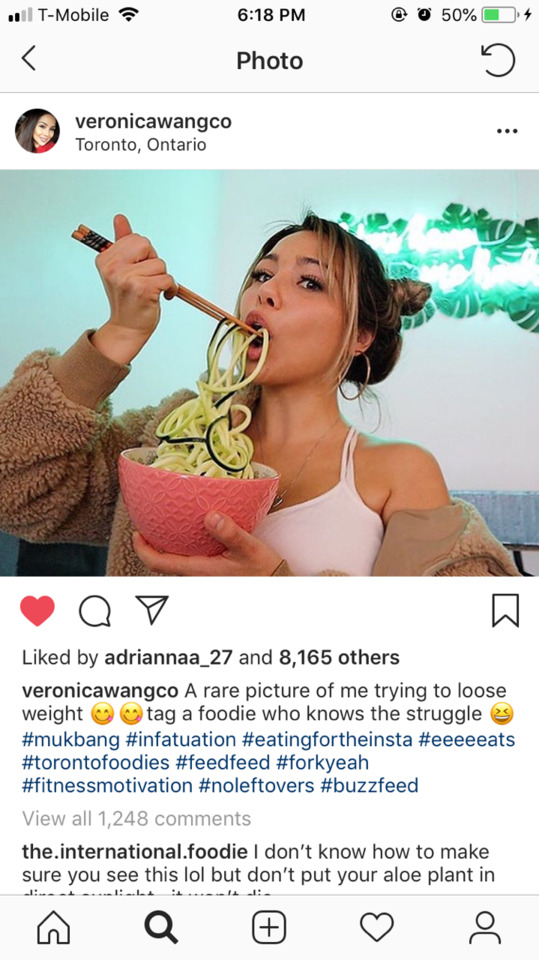

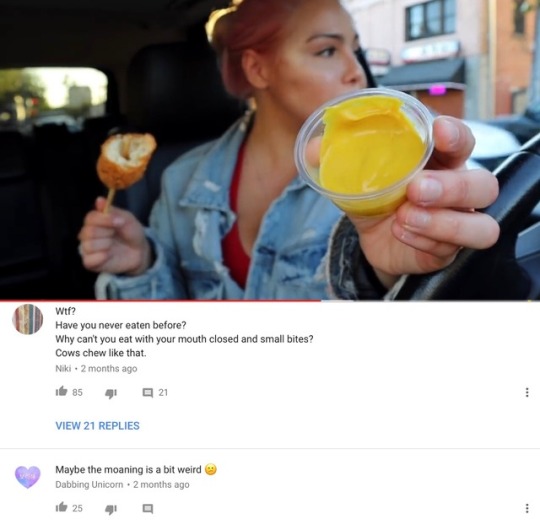
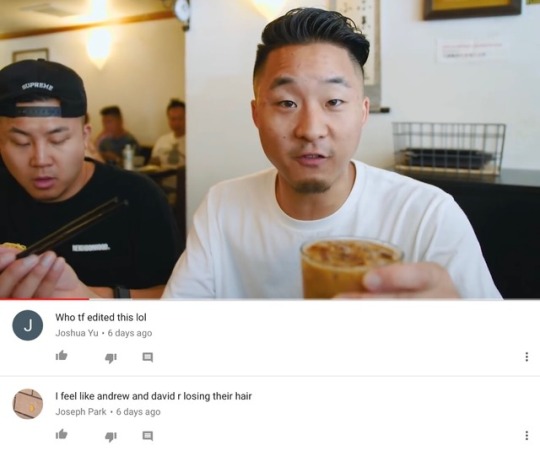


The society that we live in is a social construct. We as human beings have created a world that is made up of standards, expectations, and goals. However, these ideas don’t apply to everyone equally. Depending on who you are physically can easily affect the way society sees you and even yourself for this matter. Essentially because we live in a binary society. Being male or female has a huge impact in our lives whether we like it or not. It is generally expressed that if you’re male you should be masculine and if you’re female you should be feminine. Although over time we have become more open and accepting to other identities and how we express our selves, masculine and feminine expectations will always be ingrained in society and in our minds regardless of the way we may truly feel. In my blog post, I’m going to be discussing how gender strongly affects the way viewers and the accounts that I follow deal with self expression and power. In the article Brand Posting Feminist Self, Weiser talks about paying particularly close attention to the feedback that accompanies videos and posts, and that viewers feedback establishes a kind of relationship between post videos, video makers, and viewers! Weiser also discusses the construct of self and how there are two types of constructs, the video content in which the person posting the content is intending to portray and the feedback from users and viewer.
In regards to the account First We Feast, I’d like to also talk about Gill’s concept of obsessive preoccupation with the body and how the body is presented as a women’s key source of identity. In the photo of the video posted, Sean Evans, host of the First We Feast is interviewing actress Charlize Theron on the sub skit Hot One’s where he interviews and asks celebrities and various guest questions while eating an array of hot wings that only gets hotter moving up the Scoville scale. Although the main focus is Evans and Theron talking about various topics while enduring the heat, it is shown that a lot of the comments posted about Theron are drawn towards her beauty and sex appeal. Comments like “she’s a bombshell”, “hot wings and even hotter guests”, and “hot ones with a hot one” portray this idea that the only identity that she has right off the bat is her sex appeal and physical appearance. I think this also relates to Gil’s concept of bodily property and that the attention and power that is being surfaced by viewers is her femininity and sexualized body.
On Veronica Wang’s Instagram and YouTube channel I want to talk about Gil’s concept of self surveillance and discipline and toxic shamming. In regards to Wang’s Instagram, I’ve posted various photos of her eating a giant pizza slice exclaiming “just one slice”, and another photo eating zucchini noodles exclaiming “a rare picture of me trying to lose weight”. In the comments most people talk about how she’s so beautiful and sexy and that she doesn’t need to lose weight. I think this relates to the concept of Wang meeting a certain expectation of femininity, her physical appearance and her content is strongly related to the idea that you always have to work for it or you’ll lose that image. The power and identity that she has on Instagram is very empowering in a sense that she has portrayed her account to be feminine, sexy, and pleasing to herself and others. However, on Wang’s YouTube channel she receives a different type of feedback that relates to Gil’s concept of toxic shamming. Although she seems to be portraying the same identity, what viewers have to say about her videos and the content is rather the opposite. The photo of the video I posted is her eating in her car and talking about various topics. In the comments section viewers have made comments about the way she eats and how she makes noises when she eats. I think this relates to the expectations of a female and how you should have manners and self discipline. Having said that, I think the relationship between Wang and her viewers on Instagram and YouTube effects Wang’s power and self expression as a female.
Relative to the example of a Veronica Wang’s construct of self on YouTube from the viewers point of view, I’d like to finally point out that toxic shamming doesn’t just happen with only females. In a video clip of the Fung Bros, they also deal with society’s expectations of how a male should be masculine and look a certain way. In the comments section viewers comment about their weight and hair loss even though the videos context has nothing to do with their appearance. Overall, I think the feedback of others through social media platforms is very oppressive in a sense that branding yourself, individualism, choice, and empowerment only reaches viewers to a certain extent before society disempowers you based on your gender and the norms and standards of postfeminist media culture.
0 notes
Text








In social media, the word friend or friendship has become a very broad term. Although it is safe to say that we use social media to communicate and connect with friends, to have a friendship via social media is a rather grey area in understanding the nature of it. According Faux, it’s still not clear that we still know what friendship means. What does it mean to be friends through social media? What determines the meaning of a friendship over social media? I think that friendship in the context of social media is any type of connection that people make through the use of technology whether or not it has meaning or a purpose. In the readings, Boyd talks about how friendship is for instrumental relations rather than social relations. Through the accounts that I follow I see that friendship leans in both the direction of instrumental relations and social relations because there is a shared interest which is food, but also some of the accounts promote themselves and create content for views and popularity which creates a relationship for a reason.
In BuzzFeed’s Tasty Instagram page they generally post various video recipes and food porn to share with their followers and “friends”. In the examples that I’ve posted, Tasty uses the word “friend” and “best friend” in their description of a post to develop a connection with their viewers with the idea of food and friends. They are talking to their viewers from a very casual yet personal level to create the “friendship” connection. In addition, I think the idea of sharing food is creating a connection with their followers in a sense that when you’re friends with someone you share interests like food! In regards to instrumental relation, Tasty is creating this connection with food and followers to gain more views and fans which essentially benefits them as a network.
Looking at Veronica Wang’s YouTube channel, she focuses on Mukbangs, which originates from Korea. Mukbang is an online video broadcast in which a host eats large amounts of foods while talking to their audience. In YouTube and through Instagram, Veronica has created this friendship with her audience through videos where she talks to her viewers about her life and various topics. She also interacts with them through the comment section and on Instagram. She has even coined a name for her viewers, “chicken wangs” which reflects the idea of having a close friend or best friend. Her “chicken wangs” are her supporters, viewers, and friends. Veronica uses food and social media for social relations, she creates connections and friendship based on a common interest, which in her case is food.
Lastly, I’d like to talk about the YouTube channels called FungBros, Good Mythical Morning, and First We Feast in regards to the point that sometimes it’s hard to tell whether social media is being used for goal oriented reasons or for social enjoyment. FungBros is a hosted by two brothers, Andrew and David who focus on the food and culture in Asian cuisine and sometimes other cuisines as well. First We Feast focuses on combining food and popular culture as a way to start conversation making videos with various celebrities and guests, hosted by Sean Evans. Good Mythical Morning is a daily morning talk show hosted by Rhett and Link who use weird and crazy food ideas for the content for their videos primarily for entertainment.
Aside from viewer’s comments and likes, the meaning of “friendship” via social media has also appeared in the videos they post themselves. Surprisingly, I realized that all five hosts have made an appearance on at least one of each others channels or accounts. Having said that I think this reveals that friendship for social relation exists because you not only have viewers and accounts creating friendships with viewers and their audience, accounts also create friendships by collaborating with other accounts. In contrast, I can see that there is also the purpose of friendship in videos for instrumental relation; channels making appearances on other channels as a favor to gain more likes, views, subscriptions, and as means of having connections for business purposes. Overall, I don’t think this kind of tension is important to pay attention to. Although to progress in social media, you should gain connections to gain followers, likes, and subscribers, it is also fun just to sit back, relax, and enjoy simply because you like or have an interest in the content. This also relates to the term that Bloor discussed called “nihilism”, who really gets to decide what’s importsnt and true meaning of what’s posted. All the channels I follow essentially use food for entertainment and interest purposes and because they themselves love food. Plus, who doesn’t enjoy food?
0 notes
Text






(Intro)
Since I can remember, food has always held a special place in my heart. Whether it’s eating food, cooking food, sharing food, or talking about food, food has always created a comfort and excitement in my life. What can I say, I am a foodie! I love food! I think that food is a universal language; when you eat food it brings people together. I know that everyone has a favorite place to eat or even a favorite place to go with friends or family. There are people who enjoy watching food on television. Some people like to read about food. Others enjoy talking about food or grabbing a bite to eat to have a talk! Somehow, food has a way of being in the right place at the right time all the time! Evidently, food has grown into more than just something we consume. It has become a phenomenon in which we use food to communicate through social media behind many different platforms. It is something people can easily relate to, share, and enjoy. Aren’t you getting hungry just thinking about it?
The social network platforms that I will be using include YouTube, Instagram, Yelp, and Buzz Feed: Tasty website. The accounts that I will be following are called First We Feast, Good Mythical Morning, FungBros, Emmy Made In Japan, and Veronica Wang. Buzz Feed: Tasty is another great source that I want to explore where various food journalists and food experts can share food related blog posts, videos, and recipes to the public. The accounts that I follow create videos or posts that are either related to food, about food, or collaborates food into their content. Through my Tumblr blog I will be analyzing the unique ways each account uses food as means to communicate through social media to create a connection with online viewers. I will also be analyzing how online viewers benefit and communicate with the accounts for entertainment, information, or social purposes by commenting, sharing, liking, and subscribing.
Just like social networks, food is geographical; it has both place-geography and psych-geography. It has meaning, culture, and a story attached to it. Not only do we enjoy eating food, it is a growing community just like social networking that has become significantly important in a social, economical, and even political perspective. Talking about food or using food as an outlet to communicate through social media has enabled people to create connections, reconfigure relationships, and expand experiences. Food has become such a staple that we even have apps like Yelp and Door Dash to help you find local food businesses, share your food experiences, and satisfy your cravings. Trust me, eating is only the beginning. Food isn’t just a cooking on Food Network anymore, it is significant in a way that expands our perspective, opinion, and passion for food. Personally, following these channels has not only made me more hungry but it’s broadened my knowledge and interest in the food community!
#yelp#veronicawang#firstwefeast#goodmythicalmorning#buzzfeedtasty#emmymadeinjapan#food#community#youtube#instagram#fungbros#communication
0 notes